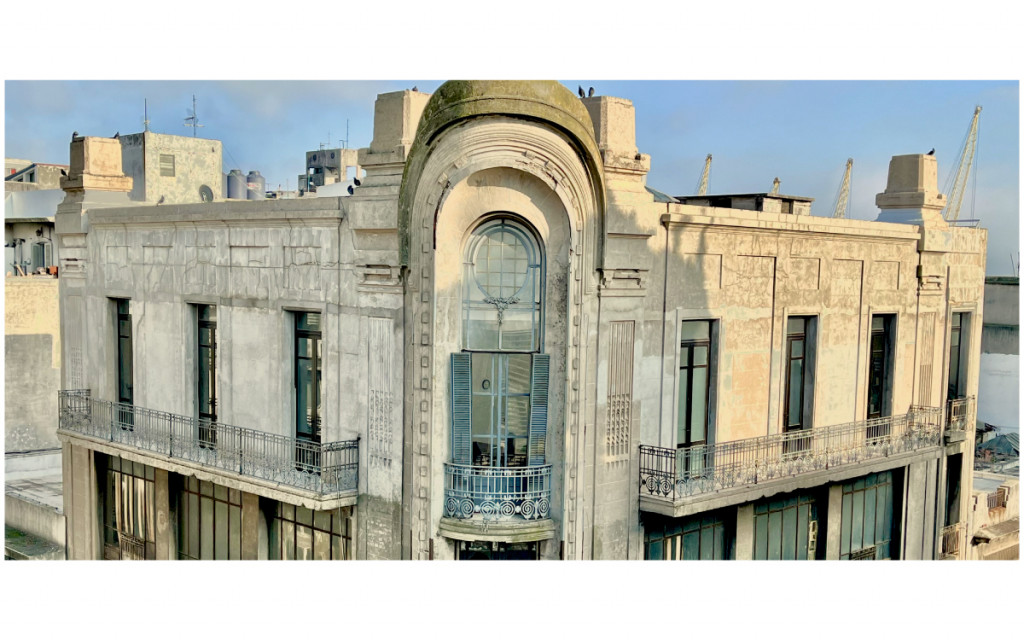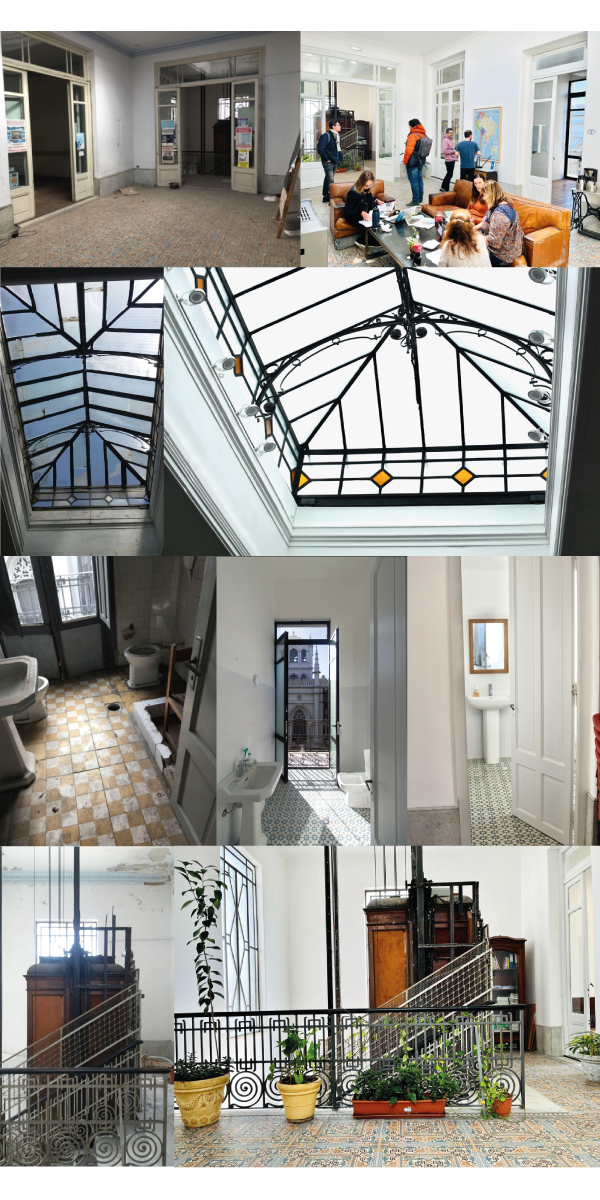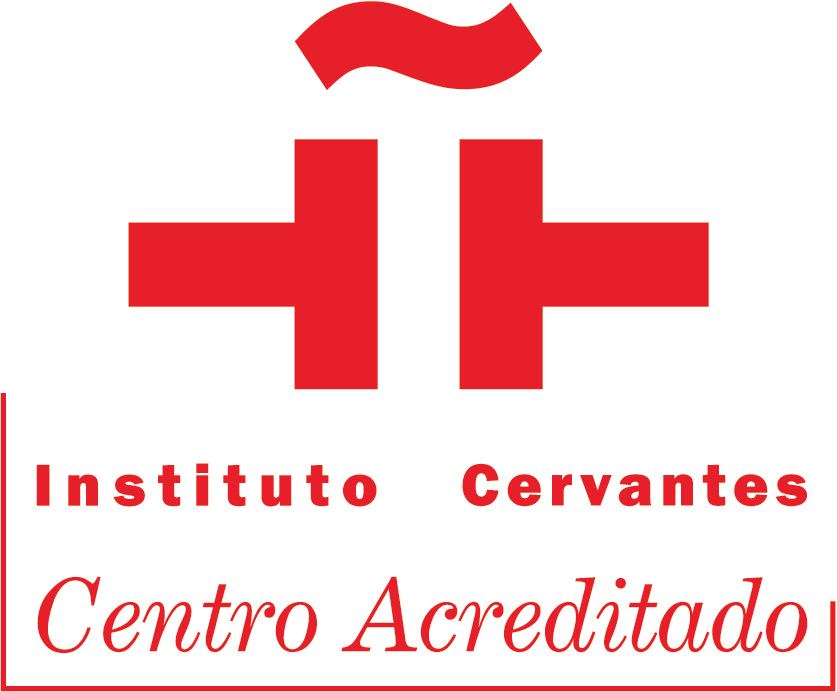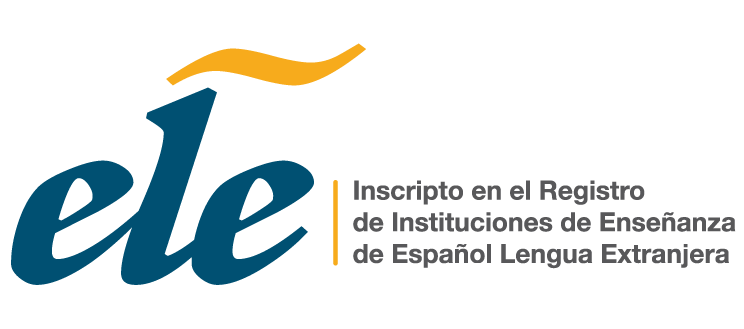Since its inception in 2007, Academia Uruguay has occupied historic buildings in the Ciudad Vieja neighborhood. Initially the school was located on the second floor of a colonial house built between 1850 and 1860, located on the corner of Juan Carlos Gómez and Rincón.
In July 2022 Academia Uruguay moved to its new location at 1459 Juan Carlos Gómez Street, on the corner of 25 de Mayo. In order not to interrupt its tradition, the building that now houses the school is in Art Nouveau style and was built in 1918 by architect Humberto Pittamiglio and engineer Adolfo Shaw. Initially, the first and second floor were destined for a department store called Tienda Elegancias; while the third floor, currently occupied by Academia Uruguay, was destined for housing.
Department stores were large buildings that offered their customers a wide variety of products and covered a vast spectrum of needs. They offered clothing, household items, furniture, decorative objects, among others. They used to be strategically located in the center of the city, in important areas with a high traffic of people. They were large, multi-story buildings in which the different sections of the store were divided according to the product offered.
Department stores emerged in the world as a result of the significant growth of the consumer society during the 19th century. The Industrial Revolution accelerated economic expansion and fostered the development of the middle class; consequently, there was an increase in retailing. Growing prosperity and social mobility increased the number of people with extra disposable income, while window shopping was considered a leisure activity. Some examples of department stores in the world are: the Galeries Lafayette store in Paris, opened in 1893 by Théophile Bader and Alphonse Kahn, the Harrods store in London, founded in 1834 by Charles Henry Harrod, and the Macy’s store in New York, which began its activity in 1858, among others.
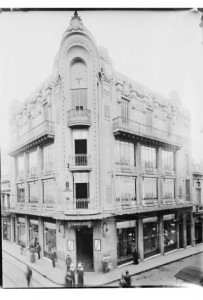 The first half of the 20th century was the boom time for the department stores that were established in Montevideo. These emerged as a reflection of those that already existed in Paris and London and later spread to other European and American capitals. It was a revolutionary commercial system for the time that required the construction of buildings of large proportions that had large windows suitable for displaying fashionable products. It was in this context that the building destined for Tiendas Elegancia, today Academia Uruguay, was built.
The first half of the 20th century was the boom time for the department stores that were established in Montevideo. These emerged as a reflection of those that already existed in Paris and London and later spread to other European and American capitals. It was a revolutionary commercial system for the time that required the construction of buildings of large proportions that had large windows suitable for displaying fashionable products. It was in this context that the building destined for Tiendas Elegancia, today Academia Uruguay, was built.
In 2022 Academia Uruguay began occupying the third floor of the aforementioned building and between 2017 and 2022 it was completely renovated without losing its original style. Special emphasis was placed on maintaining historic elements such as the wrought iron skylight that illuminates the central courtyard, the wooden elevator dating from the early 20th century, the limestone floors, ceiling moldings, etc. Below we share some before and after photos.
Today, Academia Uruguay has nine classrooms with natural light, equipped with whiteboards, computers, air conditioning and comfortable chairs and tables for students to enjoy their learning experience. As part of the school’s facilities, there are also two rooms for administration and academic coordination, a library, a kitchen, three bathrooms and a terrace from which the port, the bay and the hill of Montevideo can be appreciated.




